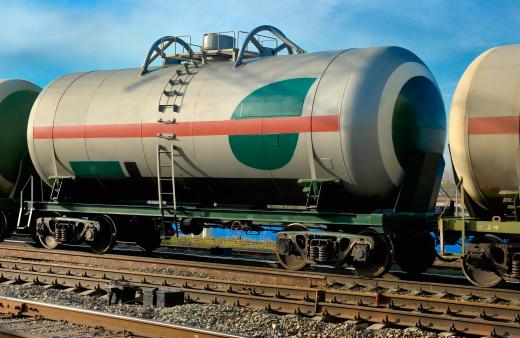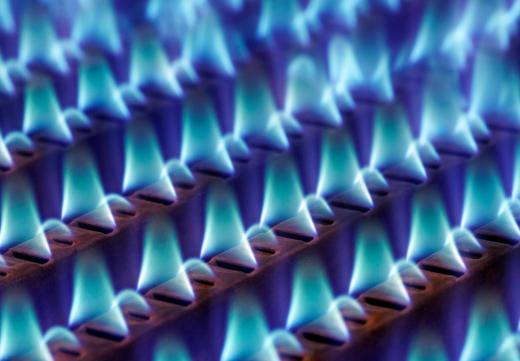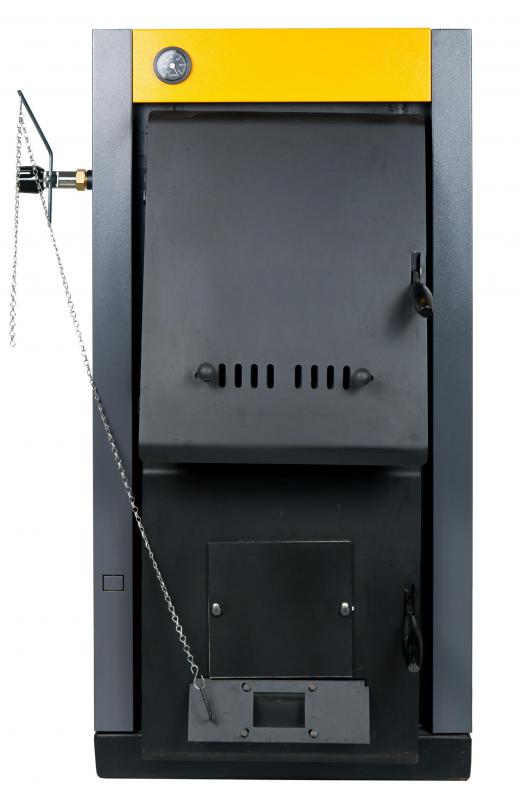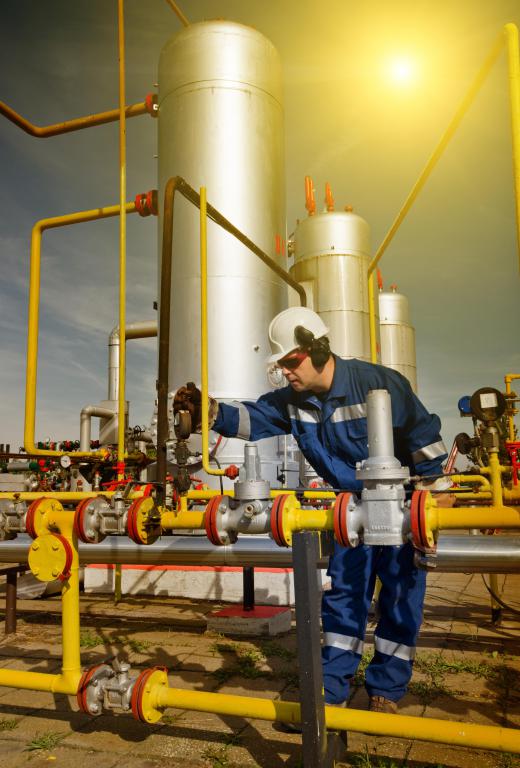What is Natural Gas Combustion?
 Mary McMahon
Mary McMahon
Natural gas combustion is an exothermic chemical reaction in which natural gas and oxygen react, producing heat and several chemical byproducts. This reaction can be controlled and harnessed to generate heat for cooking and heating. It can also be used to power an electrical generator used to create electricity which can be used for lighting and other purposes.
Natural gas is comprised primarily of methane. Sources for natural gas include fossil fuel deposits which can be processed to yield natural gas and biofuel generators which can be used to make methane from biological material. The gas is treated to make it as pure as possible, removing compounds which could impair the combustion process or generate pollution which would make combustion harmful to the environment.

When natural gas burns, the primary byproducts are carbon dioxide and water, with some carbon monoxide as well. Natural gas combustion does not generate other atmospheric pollutants, and when it takes place efficiently, it should not generate soot and other particulates. The byproducts of combustion can be vented into the environment or trapped. Trapping is often recommended for carbon dioxide to prevent this greenhouse gas from entering the environment.

Proponents for natural gas energy often point out that natural gas combustion is a clean process. It is certainly cleaner than burning many fossil fuels, creating lower amounts of pollution per unit of energy generated. However, a number of factors can influence the cleanliness of natural gas combustion, including the precise mixture of components in the gas, the efficiency of the conditions under which it is combusted, and the filtering system used to trap byproducts, if such a filter is in place.

Because byproducts of combustion are a concern, natural gas combustion must take place in a well ventilated area. Indoors, this includes a flue to draw byproducts of combustion away from the site of combustion. It may also include a fan and other measures. Outdoors, gases generated during combustion will naturally dissipate, with no need for ventilation.

A system which is designed for natural gas combustion may work with other gases, or it may not, depending on when and how it was designed. People who want to convert to a different gas source should consult a gas professional to confirm that it will be safe and to find out if any adjustments need to be made to the system so that it will work properly and safely.
AS FEATURED ON:
AS FEATURED ON:














Discussion Comments
1 cubic foot of natural gas (Ch4) produces between 900 to 1100 BTU's of heat. Use 1000 as a good average.
Each cubic foot of natural gas requires 10 cubic feet of air for proper combustion (the ten cubic feet of air has 2 cubic feet of oxygen, and the rest is mostly nitrogen-i.e air is 20 percent [plus a bit] oxygen).
Too rich a burn (more ch4 than 02) results in more carbon monoxide, a byproduct resulting from the resultant incomplete combustion.
Too lean results in creation of a nitrous oxide, a combustion byproduct.
With the right ratio, Ch4 is far cleaner burning than other hydrocarbons.
End of lecture test: 10,000 btus needs how much oxygen?
(Why building codes now require external combustion air be brought to the larger natural gas appliances).
Does anyone know the ratio of natural gas vs. air for optimum combustion. Thanks in advance for your time. I've looked every where.
Post your comments